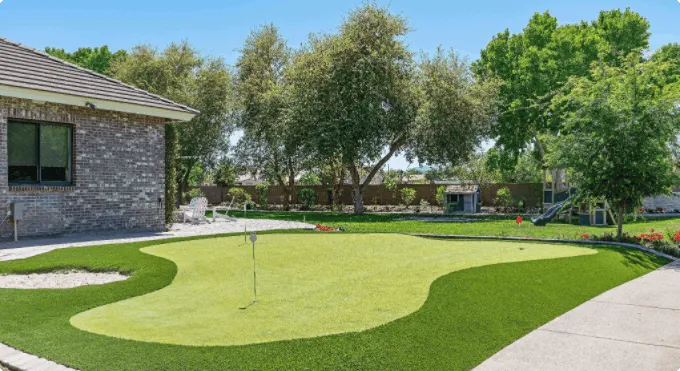
- Afrikaans
- Arabic
- Belarusian
- Bengali
- Czech
- Danish
- Dutch
- English
- Esperanto
- Estonian
- Finnish
- French
- German
- Greek
- Hindi
- Hungarian
- Icelandic
- Indonesian
- irish
- Italian
- Japanese
- kazakh
- Rwandese
- Korean
- Kyrgyz
- Lao
- Latin
- Latvian
- Malay
- Mongolian
- Myanmar
- Norwegian
- Persian
- Polish
- Portuguese
- Romanian
- Russian
- Serbian
- Spanish
- Swedish
- Tagalog
- Tajik
- Thai
- Turkish
- Turkmen
- Ukrainian
- Urdu
- Uighur
- Uzbek
- Vietnamese
Calculating Turf Coverage per Square Meter for Optimal Lawn Management
Dec . 11, 2024 09:13 Back to list
Understanding Turf A Guide to Turf Per Square Metre
Turf, the term used to describe the upper layer of soil that is usually covered with grass, plays a vital role in landscaping, agriculture, and urban development. It has become an essential element for creating aesthetically pleasing environments in gardens, parks, sports fields, and golf courses. To effectively assess and manage turf installations, the concept of 'turf per square metre' emerges as a useful metric. This article delves into the significance, factors affecting, and calculation of turf per square metre.
The Importance of Turf
Turf serves multiple purposes beyond its pleasing appearance. It provides a natural habitat for various species of insects and small animals, helping to maintain local biodiversity. Additionally, turf has notable benefits for the environment. It helps prevent soil erosion, filters rainwater, and improves air quality by absorbing carbon dioxide and releasing oxygen. Furthermore, well-maintained turf can contribute to temperature regulation in urban areas, mitigating the urban heat effect.
In terms of recreational benefits, turf is crucial for various sports and leisure activities. Whether it's a football field, a cricket pitch, or a simple backyard lawn, the quality of turf can significantly impact the user experience. To achieve these benefits, understanding the right amount of turf required per square metre is fundamental.
Calculating Turf Per Square Metre
Calculating turf per square metre involves understanding how much turf is needed to cover a specific area adequately
. The first step in this process is measuring the area where you intend to lay the turf. This can be done using a simple tape measure to calculate the length and width of the space.For instance, if you have a rectangular area measuring 10 metres by 5 metres, the total area would be
\[ \text{Area} = \text{Length} \times \text{Width} = 10 \, \text{m} \times 5 \, \text{m} = 50 \, \text{m}^2 \]
turf per square metre

Next, consider the type of turf you are using—whether it's natural grass or synthetic turf. A typical roll of natural turf generally covers about 1 square metre. Therefore, for our example area of 50 square metres, you would need approximately 50 rolls of natural turf.
It’s also essential to factor in the turf's growth potential and maintenance requirements. Turf varieties require varying amounts of nutrients, water, and sunlight. Additionally, different types of soil may affect the establishment and longevity of the turf. For example, some grasses require more care when installed on sandy soils compared to clay soils.
Factors Impacting Turf Quality
1. Grass Type The choice of grass can greatly influence turf durability and aesthetic appeal. Cool-season grasses, like Kentucky bluegrass, thrive in northern climates, while warm-season types, such as Bermuda grass, are better suited for warmer regions.
2. Soil Quality Healthy, well-aerated soil enhances root development and moisture retention. Conducting a soil test can help determine pH and nutrient levels.
3. Maintenance Practices Regular mowing, fertilization, and irrigation are crucial to maintaining healthy turf. The amount of turf per square metre also dictates how densely the grass grows, influencing the frequency of these maintenance tasks.
4. Climate Conditions Weather patterns, including temperature, humidity, and seasonal variations, play a significant role in grass growth and turf longevity.
Conclusion
Understanding turf per square metre is essential for anyone involved in landscaping, gardening, or sports field management. By accurately measuring the required turf area, considering the influencing factors, and selecting the appropriate grass type, anyone can create a lush, vibrant lawn or field that meets their specific needs. As the importance of green spaces continues to grow in urban planning and environmental sustainability, the role of turf will undoubtedly remain a significant focus for the future.
-
The Benefits of Artificial Turf for Indoors
NewsJul.15,2025
-
How Artificial Grass Suppliers Ensure Quality Products
NewsJul.15,2025
-
Artificial Grass and Pets: A Space for Relaxation
NewsJul.08,2025
-
Balcony & Outdoor Decoration with Artificial Grass
NewsJul.08,2025
-
Best Indoor Artificial Grass for Home
NewsJul.07,2025
-
Best Pet Turf for Dogs: Safe & Durable Artificial Grass Options
NewsJul.07,2025
Products categories









